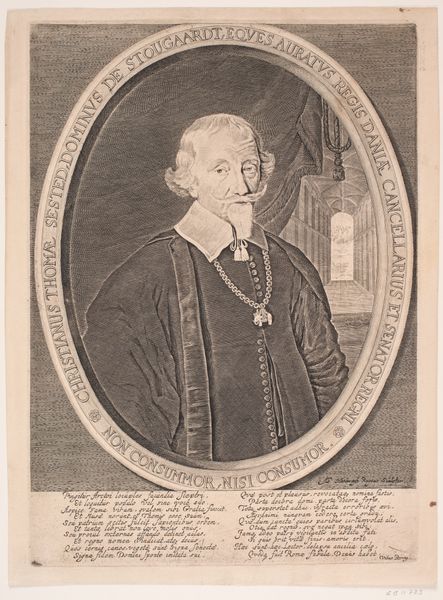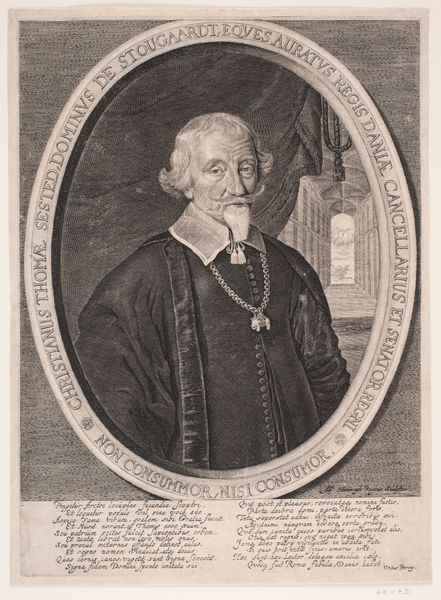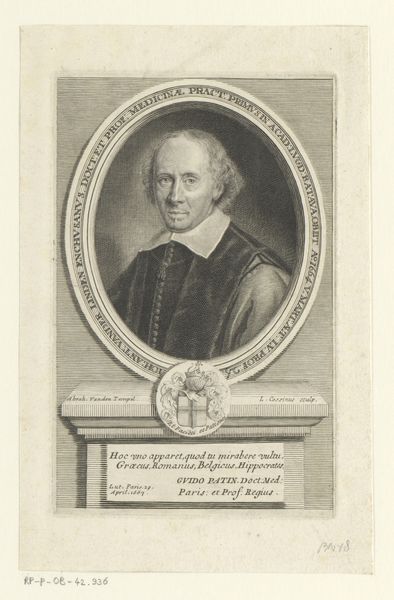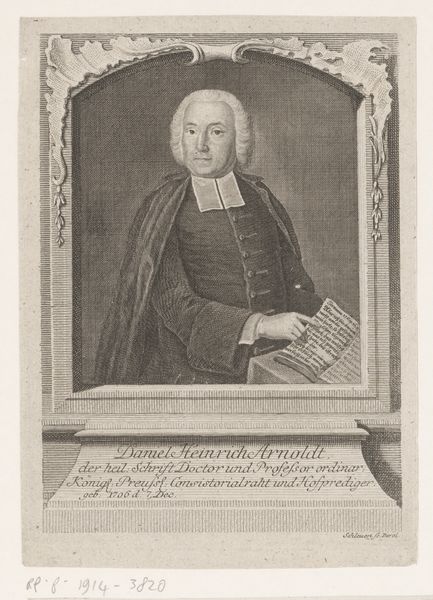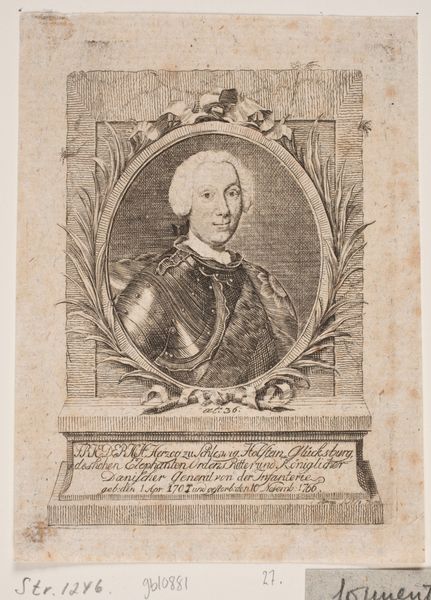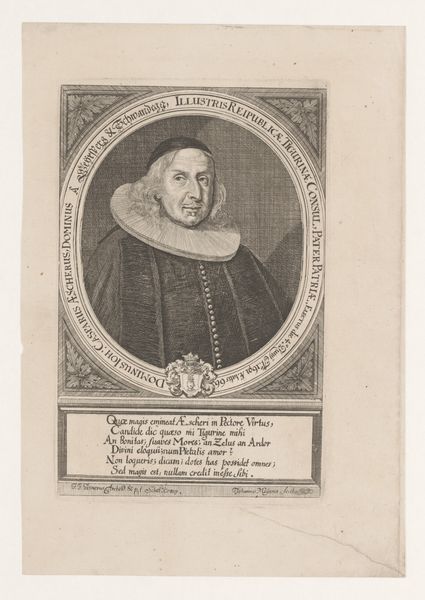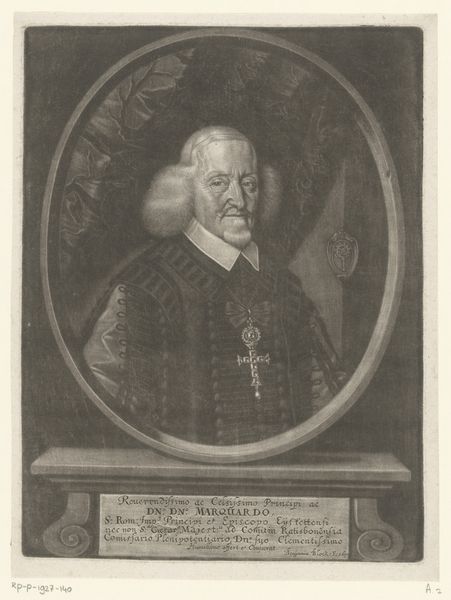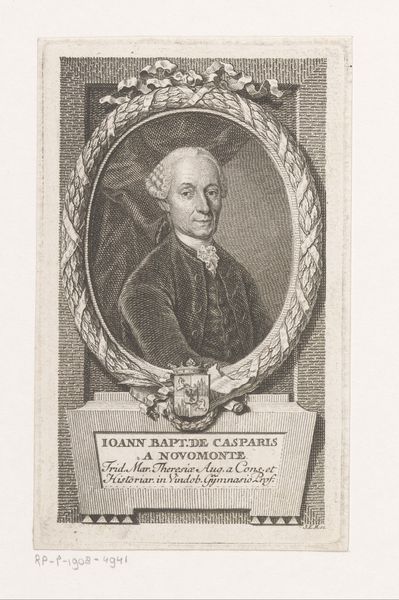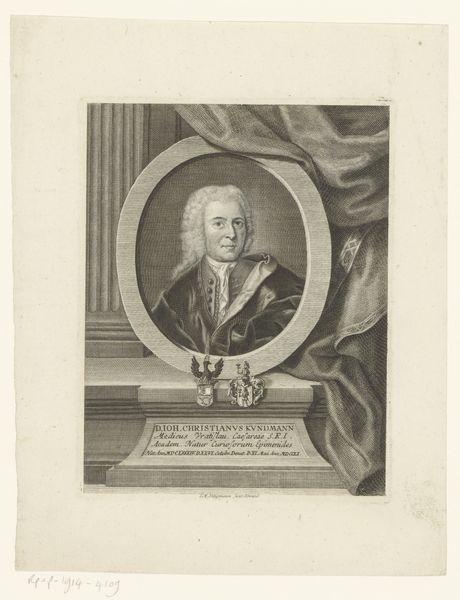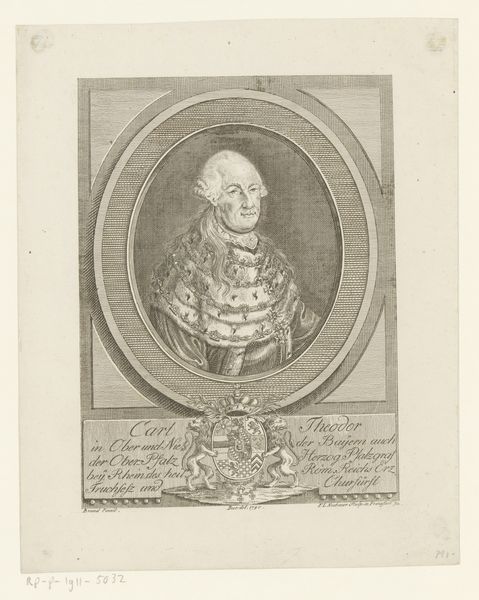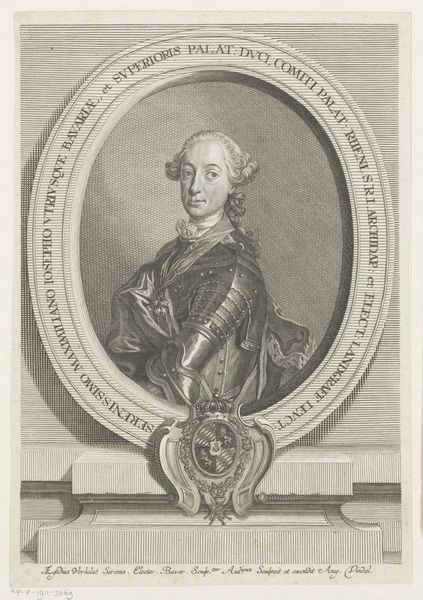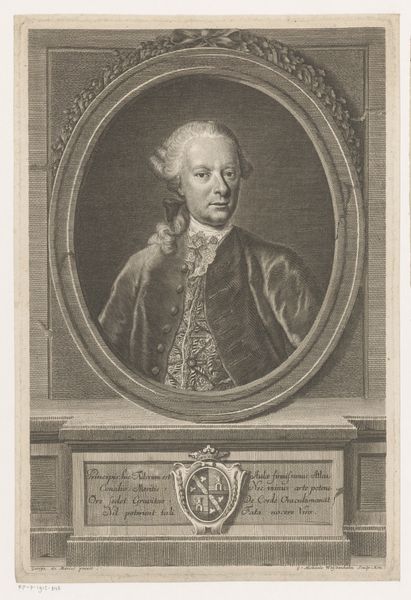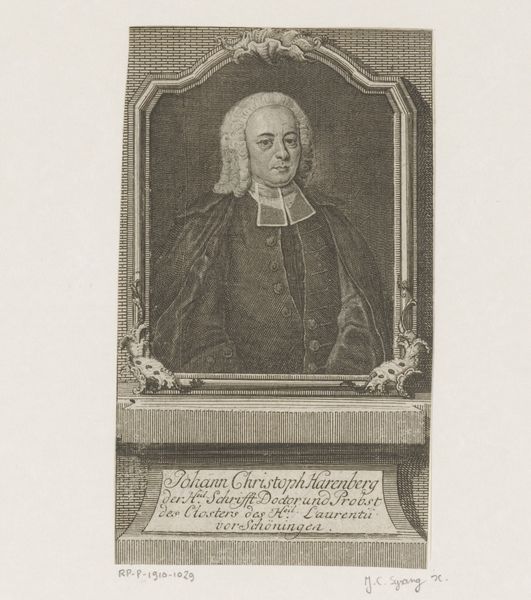
print, engraving
#
portrait
#
baroque
# print
#
geometric
#
19th century
#
line
#
history-painting
#
engraving
Dimensions: 330 mm (height) x 237 mm (width) (plademaal)
Curator: This is an engraving of Christen Thomesen Sehested, dating from 1650 to 1655. It's part of the collection at the SMK, Statens Museum for Kunst. Albert Haelwegh is credited as the artist. Editor: My first impression is one of formality and reserved power. The stark contrasts of the engraving emphasize the sitter's stern expression and the symbolic elements surrounding him. Curator: Engravings, especially those in portraiture, functioned as crucial methods of reproducing and disseminating images of power. Considering Sehested was the Chancellor of Denmark, such portraits were vital for crafting and circulating his persona. What impact did these material productions have on seventeenth-century power structures? Editor: Absolutely. The inscription around the oval border is telling; it frames him within his titles and nobility, effectively constructing an identity rooted in his social standing. The architecture visible behind him suggests a life immersed in governance and authority, literally built into the foundations of his reality. The composition tells a story about inherited privilege. Curator: I find myself drawn to the craftsmanship evident in the fine lines and precise detailing. There is a contrast between the intricate depictions of his face and attire, with the texture that those engravings create. One must consider that creating prints such as this one requires intensive labour that contributed to a system of economic exchange at the time. Editor: The Latin inscription "NON CONSUMMOR, NISI CONSUMOR" which translates to "I am not consumed unless I consume", positioned prominently at the bottom of the oval, suggests a philosophy rooted in constant engagement. I see this artwork within the social narrative of the elite justifying their place in society and in the cycles of labor of which they are distanced, while they consume and deplete society. Curator: In those ways, the portrait works on different levels. The artistry involved in printmaking and its impact on society shows the intersection between social power and visual representation, highlighting how class structures impacted art production during that era. Editor: Examining “Christen Thomesen Sehested”, then, lets us explore not just an individual portrait, but the cultural values of that era, made real by those who were largely kept out of the frame.
Comments
No comments
Be the first to comment and join the conversation on the ultimate creative platform.
